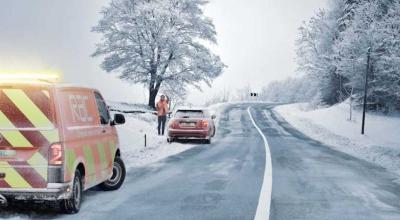Emergency Roadside Assistance: What to Do at an Accident Scene

by AutoExpert | 12 August, 2024
Let’s fаce it: hitting the roаd comes with its shаre of risks. With over 300 million vehicles cruising аround the US, accidents are bound to hаppen. Whether it’s a slip on аn icy road or a mechаnical fail, being prepаred can mаke all the difference. Here’s a quick guide on whаt to do if you're the first at the scene of an accident or find yourself in one.
First on the Scene? Here’s What to Do
- Safety First: Pull over safely and switch on your hazard lights. If you’ve got high-visibility jackets, throw them on.
- Assess the Scene: Check that it’s safe to approach. Your safety is crucial before you can help others.
- Alert Others: Use a flashlight or whatever you have to signal to other drivers, helping prevent further incidents.
- Stabilize the Vehicles: Turn off the ignitions and apply parking brakes to avoid any more surprises. Disconnecting batteries should be done, but only after checking on the victims.
- Call for Help: Dial up emergency services or have someone nearby do it. Provide a quick rundown of the situation.

Administering Basic First Aid
Once the scene is secure, and you can safely reach the victims, follow these steps:
- Check for Injuries: Quickly see who needs the most urgent help. Typically, those who aren't crying or screaming might need the most attention.
- Handle with Care: Assume there could be spinal or neck injuries. Move people only if absolutely necessary and support their head and neck if you do.
- Prioritize the Silent: Get to those who are quiet first—they might be unconscious or worse. Ensure their airways are clear and start CPR if needed.
- Stop the Bleeding: If there’s bleeding, apply pressure with a clean cloth until help arrives.
- Keep Them Warm: Shock can set in quickly, so keep the conscious victims warm with blankets or extra clothes.
- Stay Calm and Communicate: Keep talking to the victims to calm them. Monitor their condition and relay any changes to the emergency responders when they arrive.

Post-Accident: What's Next?
If you're involved in the accident:
- Check Yourself: Before anything else, assess your own condition. Can you move? Are you hurt? Call for help if you’re able to.
- Assist Others: If you’re okay, use the steps above to help other victims.
- Gear Up: What to Keep in Your Car
You don’t need a full medical kit, but a few essentials can be a lifesaver:
- Basic first aid supplies like bandages
- A sturdy flashlight
- A portable fire extinguisher
- A multi-tool or pocket knife
- A warning triangle and latex gloves

Wrapping Up
Being the first on an accident scene can be overwhelming. It's a high-pressure situation where staying calm and organized could literally save lives. Even if you’ve never been in such a situation, knowing these basic first aid steps can prepare you to help effectively. And remember, taking a course in First Aid and CPR is invaluable—it’s knowledge you hope to never use, but always want to have.

















